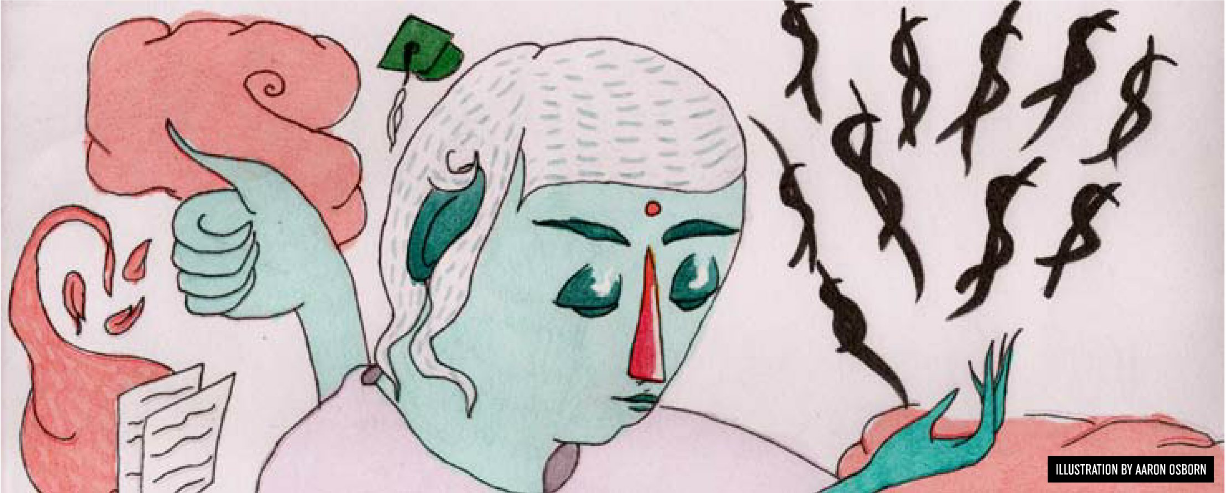Spirits away!
As anyone who’s seen "Spirited Away" or "My Neighbor Totoro" knows, there is something magical about the movies of Japanese animator Hayao Miyazaki. And while there is always something slightly exotic about Japanese anime, whether it’s the characters’ wild, bulbous eyes or the often bizarrely brutal slapstick violence, the films of Miyazaki are magical in the way that classic fairy tales can be, both delightful and disquieting at the same time. Like ancient stories, his movies are steeped in guilt and shame and wounds that won’t heal. As a children’s storyteller, Miyazaki doesn’t believe in hiding the harsh realities of life from his young viewers, but he also doesn’t want to scare them away from engaging in it. There is a precarious mixture of innocence and ugliness in his films, and the fact that he so deftly manages to never let one overshadow the other sets him apart as nothing less than an auteur of children’s animation.
This year, three new Miyazaki titles will hit our shores: "Porco Rosso," "Nausicaa of the Valley of the Wind," and "Howl’s Moving Castle." "Porco Russo" and "Nausicaa" are old Miyazaki titles that have been dubbed and re-released by Disney, while "Howl’s Moving Castle" is his latest film, one that grossed an amazing $14.5 million in its opening week in Japan.
While I’ve not yet seen the latter two, I did have the privilege of seeing "Porco Russo" when it played in town last week as part of the Portland International Film Festival. Featuring the voices of Michael Keaton, Kimberly Williams-Paisley (of "According to Jim" fame, but don’t hold that against her) and Brad Garret ("Everybody Loves Raymond"), "Porco" is the story of a World War I pilot who emerges from an intense dogfight to find that he has turned into a pig.
As the film begins, Porco is working as a bounty hunter, flying over the skies of the Adriatic, out-flying and out-foxing air pirates. Hardboiled as a film-noir antihero, Porco smokes, drinks, and cracks wise. Miyazaki does a masterful job of capturing the romance of pre-war Italy, a world of garden villas and smoky nightclubs and melancholy French ballads. But he also doesn’t shy away from the dark cloud of fascism that was creeping over Italy at the time, entangling Porco with Italian fascists who aren’t pleased that he won’t pick a side in the upcoming war.
Miyazaki’s films are full of breathtakingly beautiful images that for a few moments take the viewer out of the story and leave him or her awed at what they are seeing. In "Porco Russo," such a scene comes when Porco is telling the granddaughter of his airplane mechanic about the dogfight that left him transformed. As he describes the air battle that killed most of his fellow pilots, we see a slow, mournful parade of ghostly pilots ascending into the sky as Porco calls after them to no avail. In "Spirited Away," the moment comes when the heroine, Chihiro, rides the dragon Haku through the sky as he sheds thousands of icy blue scales, which fall to the sea like petals from a cherry blossom tree.
Unlike most animators in both the United States and Japan, Miyazaki spurns computer animation and insists that all his characters and backgrounds are hand drawn. This obsessive attention to detail and craftsmanship helps direct the viewer’s attention to the painterly care taken in the animation of his films. Since the environments in Miyazaki’s movies are as much characters as their animate co-stars, care is taken to find the right color, the right hue for objects as innocuous as the panels of a wood floor or a flashing neon sign.
And Miyazaki’s more fantastical creations have a vulnerability to them that helps us empathize with them despite their strange, otherworldly appearance. The character of No Face in "Spirited Away’ is a perfect example. Nothing more than a Kabuki-like mask attached to a black sheet of air, No Face appears ominous and frightening, but is actually more emotionally fragile than the film’s ten-year old heroine.
In a recent profile in the New Yorker, Miyazaki admitted that as far as temperaments go, he’s a pessimist. But, he added, "I don’t want to transfer my pessimism onto children. I keep it at bay. I don’t believe that adults should impose their vision of the world on children. Children are very much capable of forming their own visions."
As honest as this is, I believe there is a bit of pessimism in Miyazaki’s vision, but that it’s at war with his childlike wonder at the magic and beauty of the natural world. This war is responsible for the emotional richness and ambiguity of his work and helps define him as the genius that he is.




